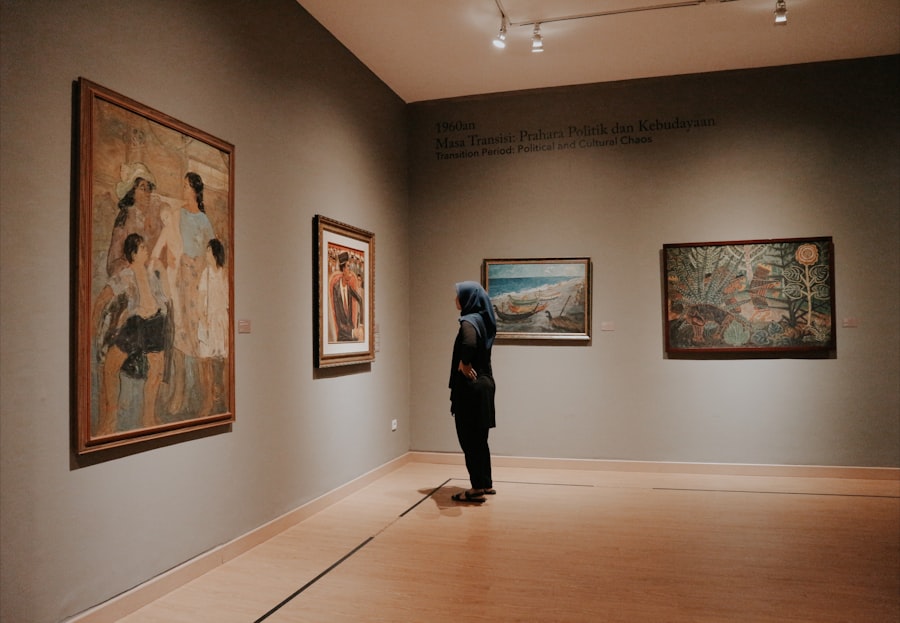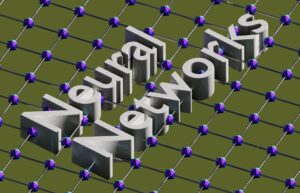The intersection of arts and social sciences represents a rich tapestry of human experience, where creativity and analytical thought converge to deepen our understanding of society. This interdisciplinary space is not merely a meeting point; it is a dynamic arena where artists and social scientists collaborate to explore complex social phenomena, challenge prevailing narratives, and foster empathy among diverse communities.
In recent years, this intersection has gained increasing recognition as a vital area of inquiry. Scholars and practitioners alike have begun to appreciate how artistic expression can illuminate social realities, making abstract concepts tangible and relatable. Conversely, social sciences contribute critical insights that can inform artistic practices, ensuring that the narratives presented are grounded in empirical research.
This synergy not only enriches both fields but also enhances public discourse by making complex social issues more accessible and engaging.
Key Takeaways
- The intersection of arts and social sciences offers a unique perspective on understanding and addressing social issues.
- Arts play a crucial role in providing insight into complex social issues and fostering empathy and understanding.
- Social sciences influence artistic expression by providing a framework for analyzing and interpreting societal dynamics.
- Collaborative projects between artists and social scientists can lead to innovative and impactful solutions to social challenges.
- Art and social science research can inform and shape policy making, leading to more informed and effective decisions.
The Role of Arts in Understanding Social Issues
The Power of Visual Storytelling
For instance, the works of artists like Ai Weiwei highlight issues of human rights and freedom of expression in China, using installations and public art to provoke thought and inspire action. Similarly, the poignant photography of Dorothea Lange during the Great Depression brought the plight of displaced families into the public consciousness, fostering empathy and understanding among viewers who may have been insulated from such experiences.
Transcending Language Barriers
Moreover, art can transcend language barriers and cultural divides, making it an effective tool for raising awareness about social issues on a global scale. The use of visual storytelling in documentary films or graphic novels can convey complex narratives in an engaging manner, allowing audiences to connect emotionally with subjects they might otherwise overlook.
Humanizing Social Issues
For example, the graphic novel “Persepolis” by Marjane Satrapi provides an intimate glimpse into life during the Iranian Revolution, offering readers a personal perspective on historical events that might seem distant or abstract. By humanizing social issues through artistic representation, these works encourage dialogue and reflection, ultimately fostering a more informed and compassionate society.
The Influence of Social Sciences on Artistic Expression

While the arts play a crucial role in illuminating social issues, the influence of social sciences on artistic expression is equally significant. Social scientists provide artists with theoretical frameworks and empirical data that can inform their work, ensuring that artistic representations are not only aesthetically compelling but also socially relevant. For instance, sociological research on urban environments can inspire architects and urban planners to create spaces that reflect the needs and desires of diverse communities.
This collaboration can lead to public art installations that engage local residents in discussions about their environment and promote a sense of ownership over shared spaces. Furthermore, psychological theories about human behavior can shape the narratives artists choose to explore. Understanding concepts such as cognitive dissonance or social identity theory can help artists craft stories that resonate with audiences on a deeper level.
For example, playwrights like Lynn Nottage have drawn upon sociological research to create works that address issues of race and class in America. Her Pulitzer Prize-winning play “Sweat” examines the lives of working-class Americans in a post-industrial town, using character-driven narratives to explore themes of economic hardship and community disintegration. By grounding her work in social science research, Nottage not only enriches her storytelling but also invites audiences to engage critically with the societal forces at play.
Collaborative Projects between Artists and Social Scientists
| Project Name | Collaborators | Duration | Outcome |
|---|---|---|---|
| Art and Sociology Exhibition | Artist A, Sociologist B | 6 months | Exhibition showcasing the intersection of art and sociology |
| Community Mural Project | Artist C, Anthropologist D | 1 year | Creation of a mural reflecting community culture and identity |
| Research on Artistic Expression in Social Movements | Artist E, Political Scientist F | 2 years | Publication of findings on the role of art in social movements |
The collaboration between artists and social scientists has led to innovative projects that bridge the gap between creative expression and academic inquiry. These partnerships often result in interdisciplinary initiatives that address pressing social issues while fostering community engagement. One notable example is the “Art for Social Change” movement, which encourages artists to work alongside social scientists to create projects that promote social justice and equity.
Such collaborations can take many forms, from community-based art projects that address local concerns to large-scale installations that provoke national conversations about systemic issues. One exemplary project is “The People’s Institute for Survival and Beyond,” which combines art with anti-racism training. Artists collaborate with facilitators to create immersive experiences that challenge participants’ perceptions of race and privilege.
Through interactive workshops and artistic expressions such as theater or visual art, participants are encouraged to confront their biases and engage in meaningful dialogue about race relations in their communities. This approach not only educates individuals but also fosters a sense of collective responsibility for addressing systemic injustices.
The Impact of Art and Social Science Research on Policy Making
The intersection of arts and social sciences has significant implications for policy making, as both fields contribute valuable insights into the complexities of societal issues. Artistic representations can serve as powerful advocacy tools, influencing public opinion and prompting policymakers to take action. For instance, campaigns that utilize visual art or performance to raise awareness about climate change have successfully mobilized communities and pressured governments to adopt more sustainable practices.
The “Fridays for Future” movement, initiated by Greta Thunberg’s school strike for climate action, exemplifies how artful protest can galvanize public support for environmental policies. Social science research also plays a critical role in informing policy decisions by providing evidence-based insights into the effectiveness of various interventions. Policymakers who engage with social scientists can better understand the underlying causes of social issues and design targeted solutions.
For example, research on homelessness has led to innovative housing-first policies that prioritize providing stable housing for individuals experiencing homelessness before addressing other challenges such as mental health or substance abuse. By integrating artistic perspectives with empirical research, policymakers can create more holistic approaches that resonate with constituents while addressing systemic inequalities.
Ethical Considerations in the Intersection of Arts and Social Sciences

Avoiding Exploitation and Misrepresentation
The potential for exploitation or misrepresentation is a significant concern; artists must be mindful of how they portray marginalized communities and ensure that their work does not perpetuate stereotypes or reinforce existing power dynamics.
Collaboration and Transparency
Moreover, ethical collaboration between artists and social scientists requires transparency and mutual respect.
Prioritizing Ethical Storytelling
This is particularly crucial in projects that seek to amplify marginalized voices; artists must prioritize ethical storytelling practices that honor the lived experiences of individuals within those communities.
Challenges and Opportunities in Integrating Arts and Social Sciences
Integrating arts and social sciences presents both challenges and opportunities for practitioners in both fields. One significant challenge is the differing methodologies employed by artists and social scientists; while artists often rely on subjective interpretation and emotional resonance, social scientists prioritize empirical data and objective analysis. Bridging this gap requires open communication and a willingness to embrace diverse perspectives.
Collaborative projects may face hurdles in aligning artistic vision with research objectives, necessitating ongoing dialogue to ensure that both parties’ goals are met. Despite these challenges, there are abundant opportunities for innovation at this intersection. The rise of digital technology has opened new avenues for collaboration, enabling artists and social scientists to reach wider audiences through multimedia platforms.
Virtual reality experiences can immerse viewers in social issues, allowing them to engage with complex narratives in ways that traditional forms may not achieve. Additionally, funding opportunities for interdisciplinary projects are becoming more prevalent as grant-making organizations recognize the value of integrating arts into social science research.
The Future of the Intersection of Arts and Social Sciences
Looking ahead, the future of the intersection between arts and social sciences appears promising as both fields continue to evolve in response to societal changes. As global challenges such as climate change, inequality, and political unrest become increasingly urgent, the need for innovative solutions will drive further collaboration between artists and social scientists. This partnership will likely yield new forms of expression that challenge conventional narratives while fostering greater understanding among diverse populations.
Moreover, educational institutions are beginning to recognize the importance of interdisciplinary approaches in preparing future leaders who can navigate complex societal issues. Programs that integrate arts education with social science curricula are emerging, equipping students with the skills necessary to think critically about societal challenges while harnessing their creativity to propose solutions. As this trend continues to grow, we may witness a new generation of thinkers who seamlessly blend artistic expression with rigorous analysis—ultimately enriching both fields while contributing to a more just society.
In conclusion, the intersection of arts and social sciences is a vibrant space filled with potential for transformative change. By leveraging the strengths of both disciplines, practitioners can create impactful work that resonates deeply with audiences while addressing pressing social issues. As we move forward into an increasingly interconnected world, fostering collaboration between these fields will be essential for cultivating empathy, understanding, and ultimately driving positive societal change.
One interesting article related to arts and social sciences is Understanding Iteration Orbits and Types of Orbits in Dynamical Systems. This article delves into the mathematical concepts of iteration orbits and their significance in dynamical systems, which can be applied to various fields including social sciences and arts. Understanding the patterns and behaviors of iteration orbits can provide valuable insights into the dynamics of complex systems, making it a fascinating topic for interdisciplinary study.
FAQs
What are the arts and social sciences?
The arts and social sciences are academic disciplines that study human society and culture. The arts encompass a wide range of creative and expressive activities, while the social sciences focus on the study of human behavior and societies.
What are some examples of disciplines within the arts and social sciences?
Disciplines within the arts and social sciences include anthropology, sociology, psychology, history, political science, economics, literature, philosophy, visual arts, performing arts, and more.
What is the importance of studying arts and social sciences?
Studying arts and social sciences helps us understand human behavior, societal structures, cultural expressions, and historical developments. It also fosters critical thinking, creativity, and empathy, and provides insights into the complexities of the human experience.
What career opportunities are available for those with a background in arts and social sciences?
Individuals with a background in arts and social sciences can pursue careers in fields such as education, research, public policy, social work, counseling, journalism, arts administration, museum curation, and various other roles that require strong analytical, communication, and interpersonal skills.
How do arts and social sciences contribute to society?
Arts and social sciences contribute to society by fostering cultural understanding, promoting social justice, informing public policy, preserving historical knowledge, and enriching the human experience through creative expression and critical inquiry.






















+ There are no comments
Add yours